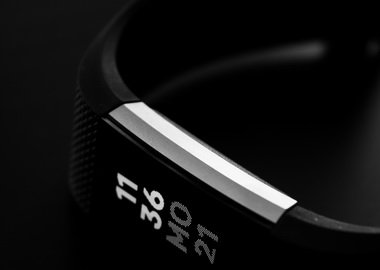Using Connected Devices, Health and Wellness Apps
As Yuval Harari concludes in his book “Homo Deus: A Brief History of Tomorrow,” mankind has managed to control famine, plague, and war in the 20th century. Now, we have new challenges to worry creative minds. The author believes that the first major project of the 21st century will be immortality, or at least the ability to cure all known diseases and extend people’s lives for as long as possible.
This may sound too ambitious. Technology still has a long way to go to build this futuristic picture. However, the first important step in achieving this goal has already been done.
Mass adoption of technology already promises people healthier lifestyles. Healthy habits, proactive condition monitoring, and early disease detection and prevention, as we know, make it much easier to increase life expectancy and enjoyment.
This article showcases how technologies positively affect wellness and lists several benefits of using IoT in healthcare.
Personalization
Humans are 99.9% the same if you look at their DNA. However, it’s the 0.1% that makes us different. What is good for one could be useless or even bad for the other. No wonder people are looking for personal fitness trainers, nutritionists, and therapists. They are all seeking a personalized approach to deal with their problems and reach their goals.
Technology for Personalization
The 21st century brings a new way of taking this approach – using technology. The key to personalized experience is data availability. When we use smart devices, we produce the data – entries, activity logs, usage time and duration, etc. – that can be analyzed to provide personalized recommendations across different wellness activities.
Moreover, these recommendations will likely be more relevant. In fact, recommendations based on specific user data collected by sensors could be even more valid than the ones based on someone’s input.
Integration of AI and predictive analysis into health and wellness apps, diet planners, fitness trackers, and preventive medicine systems makes them more intelligent and personalized. There are plenty of good examples across some of the best mobile solutions.
For example, the Fitbit coach app, paired with Fitbit wristband, has one of the world’s largest health databases, uses complex algorithms to extract meaningful insights from user data, and provides highly-tailored workout recommendations. The Health App and Apple Watch rely on the same strategy. Meanwhile, YAZIO calorie planner integrates data from various devices and apps (wristbands, Apple Watches, RFID-enabled tags and health and wellness apps) and analyzes many aspects (diet, nutrition, activity, sports) to get a bigger picture in terms of personalization.
Read: Benefits of RFID in healthcare
Moreover, technology allows us to go beyond activity tracking. Today, the capabilities of modern analytics gave us DNA tests that provide personalized workout and diet recommendations based on individual genome. Could it be more personal?
For example, FitnessGenes is a startup that offers a genetically tailored nutrition plan and workout advice. The company performs complex analysis of dozens of genes for vascular function, sleep cycles, response to saturated fat intake, energy production, aerobic exercise response, etc. to provide precise recommendations.
Another great example, AthGene, uses a powerful algorithm to convert genetic information into valuable insights for custom fitness, diet, and lifestyle recommendations. Combining 3D scanning, algorithms for muscle measurement, and a monitoring app,Sculpt relies on an alternative approach to personalization. The system performs in-depth analysis of fat-to-muscle percentage and tissue health to build personalized plans for efficient and safe workouts.
Thus, complex algorithms, self-learning, advanced scanning and big data analytics provide people with the opportunity to improve and maintain a healthy lifestyle depending on their genes, habits and goals.
Science
An intelligent experience might be even more important than a personalized experience. When it comes to health, we want to make sure any device, app, or program we use is backed up by true science. Therefore, when we use a system that recommends a diet or workout or gives feedback on our sleep or habits, we expect the cognitive technology behind it to be credible and built on trusted research results. Only then, people are safe to make informed lifestyle choices.
Technology Based on Science
Luckily, many technology companies today rely on the experience and build products in close cooperation with medical researchers, physicians, and other healthcare professionals. Moreover, IT giants build their platforms based on validated industry data and openly share these platforms for integration with other systems.
The example of two successful cooperations is Under Armor and IBM. Under Armor went for a strategic alliance with a hundred-year-old leader in computer science to build the UA Record app which “provides meaningful data-backed health and fitness insights, powered by IBM Watson’s cognitive computing technology.”
This health app combined with a Cognitive Coaching System works as a personal health advisor and fitness trainer. Thanks to IBM Watson’s broad capabilities and data access – psychological and behavioral data, advanced food intake, and nutrition management based on visual recognition, Watson’s weather domain knowledge and access to up-to-date geospatial data, etc. – the app is able to provide evidence-based coaching around various everyday activities.
Looking for an Internet of Things app development company to work on your project? Let’s talk!
Here’s another example where technology meets science. Breezometer is a well-known project focused on providing people with real-time data on the quality of air. It helps users make informed, data-driven decisions, from real-estate to jogging route choices.
In short, Breezometer relies on machine learning algorithms that analyze data to continuously provide valid air quality insights to users and third-party systems. This tool works with a massive infrastructure that leverages big data from various sources – governmental insights, weather and traffic monitoring, satellite data, GPS, etc. In other words, this air tracking solution provides accurate air quality information that is proven and validated at several levels
The combination of analytics and machine learning applied to scientific data not only helps us to understand the data. It also can significantly reduce the time needed to convert data into insights and turn this information into valuable and relevant lifestyle advice.
Building a Habit
A healthy lifestyle requires strong motivation and behavior correction. Often, it’s not easy to force yourself to start running every day. Unfortunately, even with knowing what’s best for our bodies, we find it hard to stick to healthy habits.
Technology to Build a Habit
Fortunately, apps on our phones and smartwatches are there to help us solve this issue. Today, most health and wellness apps already have configurable reminders. These smart reminders are tailored to place and time and have a huge positive effect on building a habit.
In addition to reminders, which help users stay well-organized, modern apps use gamification to keep you motivated. Designers and healthcare software developers insert different gaming mechanisms to make your fitness fun and creative.
As a result, jogging transforms into a real-life adventure, for example, with a famous“Zombies, run!” app. It encourages joggers not to give up on their routines and motivates to stay on the move, to survive. Another ingenious app, DietBet, helps users lose weight and win crowdfunded money by competing in a DietBet social network. Success stories, badges, and competitions with friends inspire and retain users in the long run.
However, not all the activities require significant effort and time. In fact, some routines seem harder than they really are. In this case, a proper app would eliminate this confusion and make any routine easier to deal with.
Breathe app by Apple is a good demonstration of this point. The app reminds users about the importance of proper breathing and coaches people with short exercises. As a result, these simple routines can seriously reduce stress in just a few minutes.
By the end of the day, successful results remain the biggest motivation in fitness and diet goals. But it’s timely reminders, exciting games, and efficient functionality that provide emotional support and strengthen habits.
Prevention and Monitoring
The faster a person identifies a health problem, the higher the chances to fully recover from it are. Therefore, prevention and monitoring are important components of a healthy lifestyle.
Technology for Prevention and Monitoring
Digital technologies play a significant role in the early diagnosis and identification of risk factors. Smart devices help collect data on heart rate, sleep time, activity, and then analyze these results against the entries from people’s medical histories such as lab reports, blood pressure measurement and MRI records. Thanks to this combination, we can more easily detect the changes in people’s health conditions.
More particularly, we can detect the symptoms of certain diseases using heart rate sensors. Thus, the growing popularity of Apple Watch and other wearables that track this data makes sense. It’s not a secret, for example, that early diagnostics of hypertension helps minimize the risks of heart attack.
Obviously, Apple Watch can’t ensure 100% accuracy. Sometimes, it’s worth pairing it with other programs or apps. However, it can give a definite wake-up call to go visit a doctor. According to Cardiogram study, “Apple’s Watch can detect an abnormal heart rhythm with up to a 97 percent accuracy, sleep apnea with a 90 percent accuracy and hypertension with an 82 percent accuracy when paired with Cardiogram’s AI-based algorithm.”
Early detection is relevant to diabetes-related diseases, too. There is one reliable way to detect diabetes: check the blood glucose level. For this purpose, Taiwan-based manufacturer EPSBio launched a wearable glucose meter Sugarwatch back in 2017.
This device can monitor blood glucose levels, sleep patterns, calorie intake and physical activity. The tons of health data it generates can then be analyzed by machine learning algorithms and used as an early diagnosis tool for users. As for healthcare professionals, this data would help them make data-driven decisions and provide timely and efficient treatment.
As a result, connected monitoring wearables, preventative analysis, and health and wellness apps together bring a new level of a healthy lifestyle and clear benefits for both people and healthcare institutions.
In general, innovations in health monitoring are promising. IoT, big data and AI-enabled technologies in this field are likely to increase life expectancy and improve its quality.
However, these technologies are still shaping up. The next decade will show how far we can get in achieving the first goal set by Harari and possibly let us peer into the future of the remaining two – achieving global happiness and “upgrading humans into gods” associated with biological, cyborg, and non-organic engineering.




